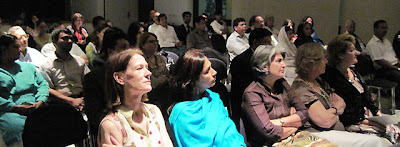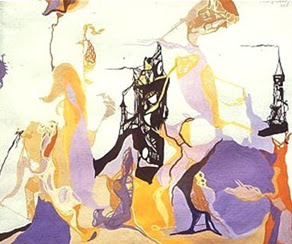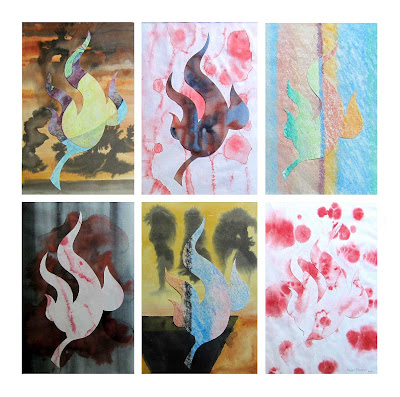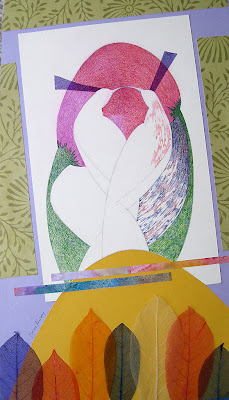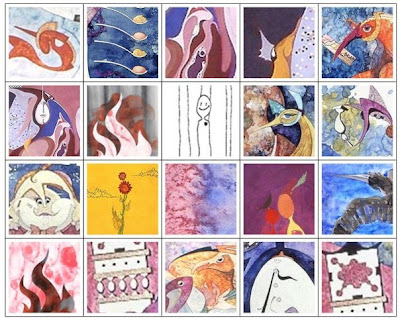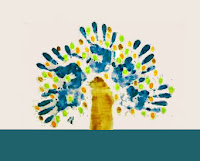
A Tribute to Carl Linnaeus, http://akermariano.blogspot.com/2007/07/tribute-to-carl-linnaeus_17.html - 17.07.07
Aguas Profundas, 1989, http://www.flogup.com/akermariano/69077 - 31.03.07
Akermariano: Artworks, 2006 - http://www.picturetrail.com/gallery/view?p=999&gid=14047119&uid=7347071 - 2006
Akermariano - Blogspot, http://akermariano.blogspot.com/ - 2005
Akermariano - Blogster, http://akermariano.blogster.com/ - 2006
Akermariano - Flickr, http://www.flickr.com/photos/akermariano/ - 2006
Akermariano - Picturetrail Gallery, http://www.picturetrail.com/gallery/view?uid=7347071 - 2006
Akermariano - Wooloo, http://www1.wooloo.org/new/s2/s2Home.php?site=akermariano - 2005
Amsterdam, Afternoon, http://akermariano.blogster.com/amsterdam-afternoon - 21.08.07
Aparador (Buffet; Sideboard), http://www.flickr.com/photos/akermariano/1823057266/ - 02.11.07
Árbol de la Vida (Arbre de la Vie; Tree of Life), http://www.flickr.com/photos/akermariano/2045579261/ - 18.11.07
Arquitectura transmigratoria (Transmigratory Architecture), http://www.flickr.com/photos/akermariano/2038145784/ - 16.11.07
Arte Lucífero, http://www.flickr.com/photos/akermariano/2166456284/ - 04.01.08
Beaucoup en commun, http://fr.blog.360.yahoo.com/blog-DwjSIsAwcKMurr0NylMADEDzFw--?cq=1&p=9 - 28.11.07
Bien Complejo y Bien Porteño, http://www.flogup.com/akermariano/728863 - 31.01.08
Breed Ravens, http://akermariano.blogster.com/breed-ravens - 03.12.07
Colección Mariano Akerman: Un dragón bien complejo y bien porteño, http://www.flickr.com/photos/akermariano/2217599165/ - 24.01.08
Conejos con tigres (Rabbits with Tiggers), http://www.flickr.com/photos/akermariano/2049827547/ - 20.11.07
Criollito & Cia. (Little Creole & Co.), http://www.flickr.com/photos/akermariano/2051154515/ - 20.11.07
De misterios y profundidades, http://www.flogup.com/akermariano/690423 - 15.01.08
Día Feliz (Happy Day), http://akermariano.blogster.com/dia-feliz-happy-day - 26.07.07
Digitalis, 2006, http://www.picturetrail.com/gallery/view?p=999&gid=14164500&uid=7347071
Kiosque de chimères, http://fr.blog.360.yahoo.com/blog-DwjSIsAwcKMurr0NylMADEDzFw--?cq=1&p=14 - 01.12.07
L'Extraordinaire Tango Rosa de Jacques Brel, http://fr.blog.360.yahoo.com/blog-DwjSIsAwcKMurr0NylMADEDzFw--?cq=1&p=4 - 26.11.07
Les Sabots d'une Reine, http://fr.blog.360.yahoo.com/blog-DwjSIsAwcKMurr0NylMADEDzFw--?cq=1&p=11 - 30.11.07
Ligeramente disonante, http://www.flogup.com/akermariano/892984 - 07.04.08
Linnaeus - Blogster, http://linnaeus.blogster.com/ - 13.11.06
Mariano Akerman - Artelista (Castellano),
http://www.artelista.com/autor/5513515359324870-akerman.html - 03.11.07
Mariano Akerman - Artelista (English), http://www.artelista.com/id-english/autor.php?a=5513515359324870 - 03.11.07
Mariano Akerman - Artelista (Français), http://www.artelista.com/id-francais/autor.php?a=5513515359324870 - 03.11.07
My Linnaeus, http://linnaeus.blogster.com/akermariano-my-linnaeus - 17.07.07
Myosotis (Vergismeinnicht, Ne m'oubliez pas - Herbe d'Amour, Nomeolvides), http://akermariano.blogspot.com/2007/05/myosotis-europaea-vergissmeinnicht-ne.html - 07.05.07
No aclares que oscurece: A buen entendedor… (To someone that understands well... ; À quelqu'un qui bien comprendre... ), http://www.flogup.com/akermariano/695034 - 17.01.08
Non au snobisme linguistique: Tu est ta langue, http://fr.blog.360.yahoo.com/blog-DwjSIsAwcKMurr0NylMADEDzFw--?cq=1&p=7 - 27.11.07
Oro y Cenizas (Or et Cendres; Gold and Ashes), 2001, http://www.flickr.com/photos/akermariano/2043087122/ - 18.11.07
Peliagudo: Lobotomía (Lobotomy ; Lobotomie), http://www.flogup.com/akermariano/698121 - 18.01.08
Plenilunio - Wooloo, http://www1.wooloo.org/plenilunio/ - 2005
Preñada extravagancia, http://www.flogup.com/akermariano/888344 - 05.04.08
Qui est Akermariano ?, http://fr.blog.360.yahoo.com/blog-DwjSIsAwcKMurr0NylMADEDzFw--?cq=1&p=1 - 25.11.07
Quitasueños ilustrado, http://www.flogup.com/akermariano/876523 - 18.12.07
Reflexiones Ultramarinas, http://akermariano.blogster.com/reflexiones-ultramarinas - 27.10.07
Renacimiento Pleno, http://www.flogup.com/akermariano/817290 - 19.01.08
Sarah Bernhardt, http://akermariano.blogster.com/sarah-bernhardt - http://www.flickr.com/photos/akermariano/2150270657/ - 30.12.07
Ser transmigratorio (Être trans-migratoire; Transmigratory Being), http://www.flickr.com/photos/akermariano/2045579257/ - 18.11.07
Siargao: A Beauty in The Philippines - http://www.picturetrail.com/gallery/view?p=999&gid=13994784&uid=7347071 - 2006
Subió la Carne, http://www.flogup.com/akermariano/733259 - 02.02.08
Terra Incognita - Descubrir, http://www.flogup.com/akermariano/702243 - 20.01.08
The Painted Bird, http://www.picturetrail.com/gallery.fcgi?p=999&gid=14044350 - 2006
The Same Order, http://akermariano.blogster.com/the-same-order - 25.12.07
The Wall of Thorns, http://akermariano.blogster.com/the-wall-of-thorns - 31.08.07
Trinidad asiática (Trinité asiatique; Asiatic Trinity), http://www.flickr.com/photos/akermariano/2045579265/ - 18.11.07
Tú eres tu lengua (Volver a lo Nuestro: No al esnobismo lingüístico), http://www.flickr.com/photos/akermariano/1854343809/ - 04.11.07
« Quand même » ... elle reste toujours brillante, http://fr.blog.360.yahoo.com/blog-DwjSIsAwcKMurr0NylMADEDzFw--?cq=1&p=16 - 30.12.07
What a Century!, http://linnaeus.blogster.com/century - 19.01.07
Zapatitos que aprietan, http://www.flogup.com/akermariano/878716 - 21.10.07





